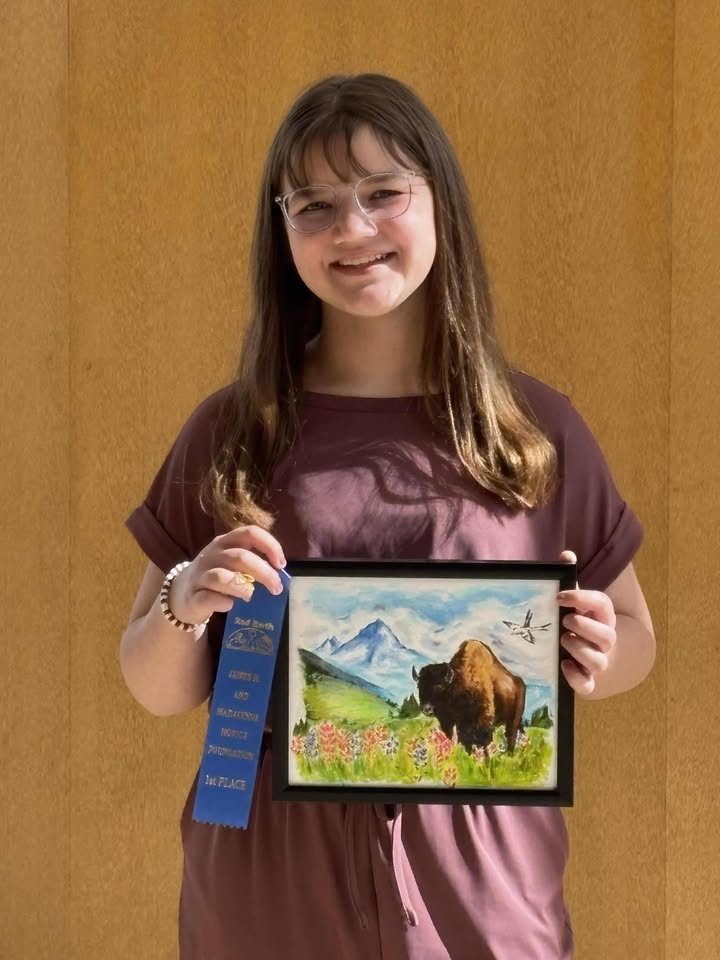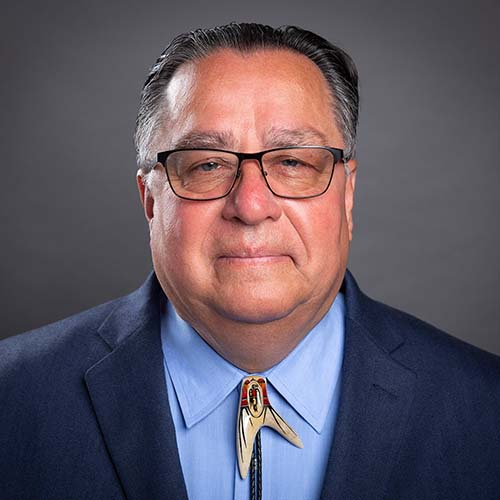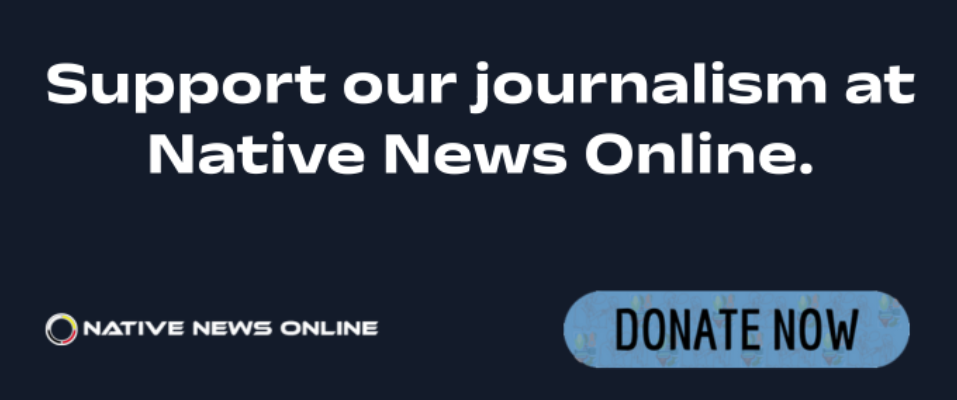
- Details
- By Chickasaw Nation Media
BYNG, Okla. — Hannah Wolfe, 13, won the 2025 Red Earth Youth Art contest, making this her second consecutive year bringing home the gold in the art competition.
“I was so excited,” Wolfe said. “I don’t even know how to describe it.”
Wolfe, a Chickasaw citizen and eighth grade student at Byng Public Schools, has been fascinated by art since she was old enough to hold a crayon.
“You know when you’re 6 years old, and you have nothing to do so you take up coloring? My passion started with that, but I got bored of coloring, so I explored other forms of art,” Wolfe said.
Wolfe is most drawn to artistic mediums like watercolor, acrylics and sketching.
Wolfe’s colored pencil and marker art piece, titled “This Land is Our Land,” was her winning piece in the 2025 Red Earth Youth Art contest. The painting depicts a scissor-tailed flycatcher flying above a bison with native wild flowers in the foreground and mountains in the background, an homage to Oklahoma’s wildlife and landscape.
“My family and I travel a lot,” she said. “That’s usually what we see — mountains and wildflowers.”
Wolfe said the landscape portrait represents her love for outdoor exploration.
“In nature is my favorite place to be,” she said.
The painting includes a wide range of colors, a specialty of the artist.
“I like my art colorful,” Wolfe said. “When I want color, I want it everywhere. I don’t go halfway.”
Wolfe also works with pencil and paper, often creating up to five illustrations a day in her sketchbook. When color is absent, complex designs take over.
“I like extravagance in all my art,” Wolfe said. “If it doesn’t have color in it, I usually go a little overboard with the pencil work.”
This is true for her 2024 Red Earth Youth Art contest winning art piece, titled “Sequoyah.”
The art piece was an illustration of Sequoyah, a Cherokee man best known for inventing the Cherokee syllabary. The drawing included letters of the Cherokee language in its background.
Outside of art, Wolfe loves to read and write as well as play her guitar. She also excels academically. She represented Oklahoma in 2024 and 2025 at the International Academic Competitions in Orlando, Florida, where she competed in the individual National History Bee, the National Science Bee and the U.S. History Bee competitions.
Although she is still young, Wolfe is already thinking of her future.
“When I grow up, I want to be an illustrator or a writer,” Wolfe said.
The annual Red Earth Youth Art competition showcases exceptional talents of First American students aged 9 through 18 in eight different categories, including basketry, beadwork, cultural items, jewelry, photography, pottery, sculpture and painting, drawing, and graphics. Red Earth Youth Art competitors must be enrolled in a federally or state-recognized tribal entity or have proof of certification as an Indigenous artisan of an Indigenous tribe.
More Stories Like This
Chickasaw Holiday Art Market Returns to Sulphur on Dec. 6Center for Native Futures Hosts Third Mound Summit on Contemporary Native Arts
Filmmakers Defend ‘You’re No Indian’ After Demand to Halt Screenings
A Native American Heritage Month Playlist You Can Listen to All Year Long
11 Native Actors You Should Know
Help us defend tribal sovereignty.
At Native News Online, our mission is rooted in telling the stories that strengthen sovereignty and uplift Indigenous voices — not just at year’s end, but every single day.
Because of your generosity last year, we were able to keep our reporters on the ground in tribal communities, at national gatherings and in the halls of Congress — covering the issues that matter most to Indian Country: sovereignty, culture, education, health and economic opportunity.
That support sustained us through a tough year in 2025. Now, as we look to the year ahead, we need your help right now to ensure warrior journalism remains strong — reporting that defends tribal sovereignty, amplifies Native truth, and holds power accountable.
 The stakes couldn't be higher. Your support keeps Native voices heard, Native stories told and Native sovereignty defended.
The stakes couldn't be higher. Your support keeps Native voices heard, Native stories told and Native sovereignty defended.
Stand with Warrior Journalism today.
Levi Rickert (Potawatomi), Editor & Publisher

